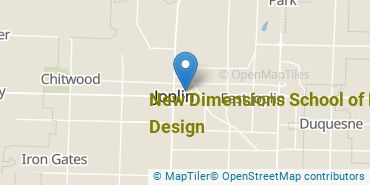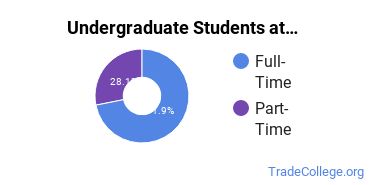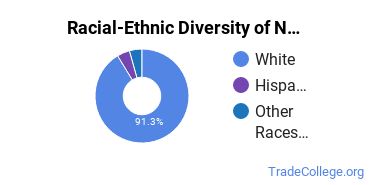New Dimensions School of Hair Design Trade Programs
New Dimensions School of Hair Design is a private for-profit institution situated in Joplin, Missouri. The location of the school is great for students who enjoy the amenities of city life.
Featured schools near , edit
Where Is New Dimensions School of Hair Design?

Contact details for New Dimensions School of Hair Design are given below.
| Contact Details | |
|---|---|
| Address: | 621 Kentucky Ave., Joplin, MO 64801-5017 |
| Phone: | 417-782-2875 |
| Website: | newdimensionsschoolofhairdesign.com |
Can I Afford New Dimensions School of Hair Design?
Student Loan Debt
It's not uncommon for college students to take out loans to pay for school. In fact, almost 66% of students nationwide depend at least partially on loans. At New Dimensions School of Hair Design, approximately 63% of students took out student loans averaging $6,825 a year. That adds up to $27,300 over four years for those students.
New Dimensions School of Hair Design Undergraduate Student Diversity

Racial-Ethnic Diversity
The racial-ethnic breakdown of New Dimensions School of Hair Design students is as follows.

| Race/Ethnicity | Number of Grads |
|---|---|
| Asian | 0 |
| Black or African American | 1 |
| Hispanic or Latino | 2 |
| White | 16 |
| International Students | 0 |
| Other Races/Ethnicities | 0 |
New Dimensions School of Hair Design Trade School Concentrations
The table below shows the number of awards for each concentration.
| Major | Basic Certificate | Undergraduate Certificate | TOTAL |
|---|---|---|---|
| General Cosmetology/Cosmetologist | 0 | 17 | 17 |
| Nail Technician/Specialist & Manicurist | 2 | 0 | 2 |
| Cosmetology, Barber/Styling, & Nail Instructor | 0 | 0 | 0 |
| TOTAL | 2 | 17 | 19 |
References
*The racial-ethnic minorities count is calculated by taking the total number of students and subtracting white students, international students, and students whose race/ethnicity was unknown. This number is then divided by the total number of students at the school to obtain the racial-ethnic minorities percentage.
More about our data sources and methodologies.
Featured Schools
 Request Info
Request Info
|
Southern New Hampshire University You have goals. Southern New Hampshire University can help you get there. Whether you need a bachelor's degree to get into a career or want a master's degree to move up in your current career, SNHU has an online program for you. Find your degree from over 200 online programs. Learn More > |
